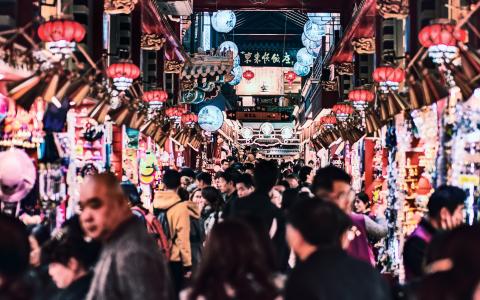
(Real Money) - Since Covid struck in 2020, it seems China has been on a different cycle compared to the rest of the world. It experienced the slowdown before the rest of the world and then started growing out of it much sooner than most of the developed world.
But then something changed this year as China once again started locking down its cities and businesses as the rest of the world reopened. Life is back to normal in most of the world after multiple rounds of vaccinations. But China's zero Covid policy which worked well with SARS, is coming back to haunt the country as it tries to contain Covid case by case in every single city. It is like trying to contain air, but at the risk of its businesses and financial economy. So, what is the right balance?
Inflation has been the global problem after Covid as central banks pumped so much money into the financial system so fast that it caused a boost in all producer and consumer prices. The system and infrastructure were unable to keep up. Initially, demand was boosted to jump start the economy out of a lull, but supply got so tight that prices shot up to a level that killed that very same demand. Central banks are now raising rates as fast they can to curb this inflation, actions that are causing even further tightening as companies and households feel the pinch of stagflation amid a global economy that is unable to grow due to so much debt.
Even though inflation is coming down from its lofty levels, it is still quite high compared to past decades. Here on Monday morning the People's Bank of China (PBOC) cut the rate on its one-year policy loans by 10 basis points to 2.75% and the seven-day reverse repo rate to 2% from 2.1%, catching everyone by surprise. This was a feeble attempt to provide a bit of relief to the economy to stem its decline, because at the same time the central bank withdrew liquidity from the banking system by issuing 400 billion yuan of MLF (medium-term lending facility) funds, only partially rolling over the 600 billion yuan of loans maturing this week. It seemed rather contradictory.
After June's surge in economic data boosted by China's infrastructure incentives and credit growth, July data has come in much softer as industrial production rose 3.8% from a year ago, lower than June's 3.9% and missing economists' forecast of a 4.3% increase. Retail sales grew at 2.7% year over year, also lower than June's 3.1% and horribly lower than the consensus estimate of 5.0%.
Fixed-asset investment in China was up 5.7% in the first seven months of the year, also lower than the 6.2% projected by economists. July's credit growth data came in lower than market's expectations, too
Most thought that China was on a path to "restimulate" the economy out of its Covid-induced lockdowns, but in effect the June move was just to stem the decline. The underlying economic data and momentum in the housing market is causing a lot more havoc than most care to admit.
China's housing market is one of the largest asset markets in the world, rounding to $62 trillion. And this housing market is crashing with residential property sales plunging 28.6% in July.
We all know that the Chinese housing market rests on speculation and constant demand from consumers using very low interest rates to pick up homes. But as real rates are now rallying, consumers have started boycotting mortgage payments as they do not trust that these developments will be completed. This is causing even more stress to lenders and the government is doing whatever it can to boost housing and property sales, to no avail.
It is no doubt that the global economy is suffering a big economic slowdown, but the issue is that this time the one tool that governments always employ to get them out of their slump, i.e. printing money, cannot be used as inflation is just too high. Most tend to focus on the US housing market post the 2008 collapse, and even though US corporations and households may be in a better shape, it does not mean the same for the Chinese economy or the Chinese consumer. Perhaps President Xi Jinping's 5.5% GDP growth target for 2022 is looking more and more like wishful thinking than reality.
By Maleeha Bengali
August 15, 2022



